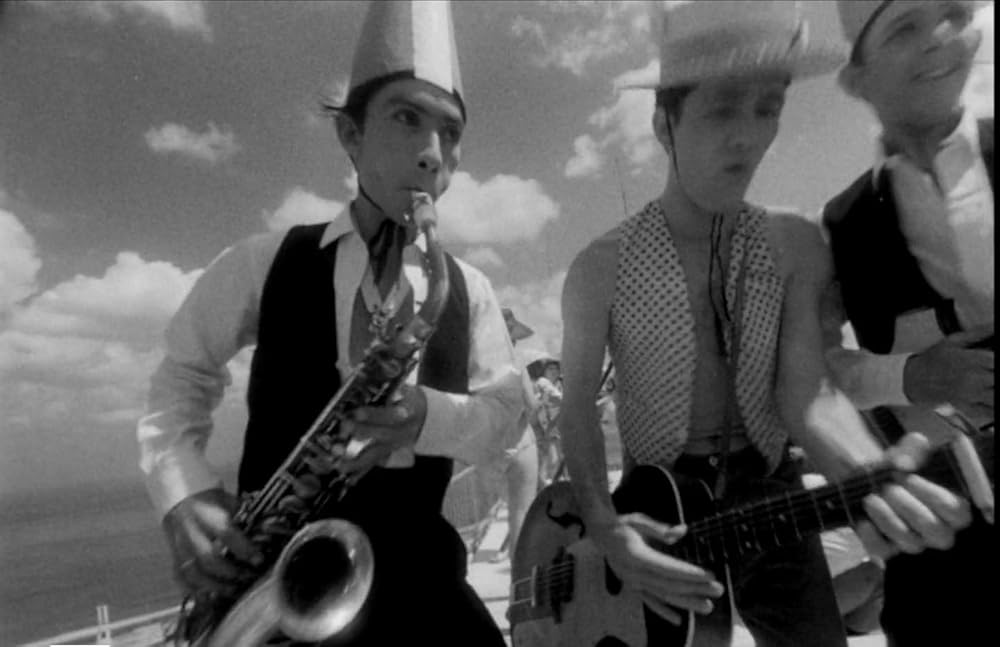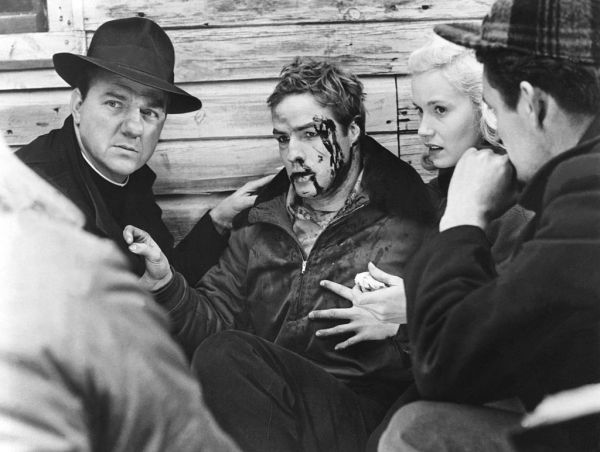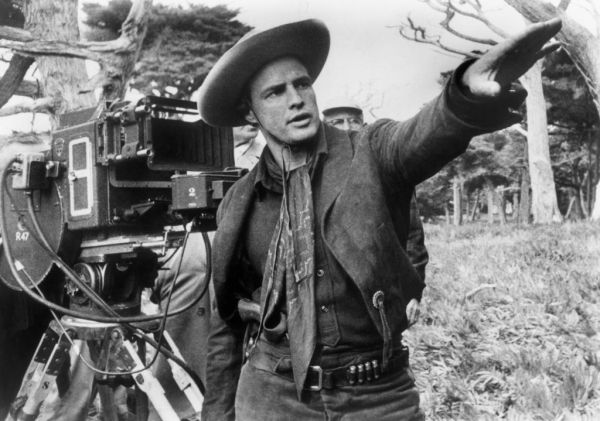Like clockwork every four years, Americans are inundated with dire warnings that the wrong vote will plunge our nation into either the clutches of communism or the chokehold of fascism. Obviously, this is sheer nonsense—the closest most Americans have ever been to communism is Rocky IV. But those curious about how such revolutions take root, or at least how they claim to, can experience Mikhail Kalatozov’s I Am Cuba (Soy Cuba).
Celebrating its 60th anniversary, this stylized 1964 Soviet co-production offers an evocative glimpse into the revolutionary fervor that engulfed Cuba in the late 1950s, culminating in Fidel Castro’s rise to power and the longest-running dictatorship in the history of the Western hemisphere. The film unfolds through four vignettes, each exploring different facets of Cuban life under the regime of Fulgencio Batista, the cartoonish strongman who ruled Cuba from 1952 through the end of 1958. These loosely connected stories range from the decadence of Havana’s nightlife to the struggles of sugarcane farmers, weaving a rich tapestry of individual experiences during a time of social upheaval. Through this structure, I Am Cuba posits that class divisions and abuses—perpetrated by both fascistic state forces and wealthy landowners—fueled a Marxist uprising a mere 90 miles from U.S. shores.
But rather than simply condemning the Batista era, the film unwittingly exposes surprising truths about life in pre-Castro Cuba, truths that clash with a meticulously crafted revolutionary narrative. Scenes meant to denounce Havana’s opulence and inequality exude an irresistible coolness, turning critique into allure. Even more striking, the film portrays a world where the poorest campesinos, the very proletariat for whom the revolution was supposedly fought, had enough viandas to share with Castro’s fighters in the 26 de Julio movement. This subtle detail dismantles the narrative of pervasive destitution that has been used to justify Castro’s armed insurrection—and the autocracy that has now endured for over 65 years.
Production on I Am Cuba began in early 1963, shortly after the Missile Crisis, as the island still pulsed with revolutionary zeal. In an essay accompanying its inclusion in the coveted Criterion Collection, Cuban film historian Juan Antonio García Borrero highlights its stark divergence from the era’s emerging revolutionary cinema. He notes that its “display of vast economic resources, the near-uncontrollable number of people involved in the shoot, and the filmmakers’ obsession with technical perfection clashed directly with the cinematic agenda” of the state-run Cuban Institute of Cinematographic Art and Industry. This agenda prioritized a more “imperfect but realistic” style that emphasized the gritty realities of Cuban life over the grand, cinematic poetry presented in I Am Cuba.
García Borrero, who still resides on the island, treads carefully in his critique. Yet, reading between the lines, it’s evident that I Am Cuba was sidelined for political reasons—and, rewatching it today within both the context of revolutionary cinema and a more nuanced reading of Cuban history, one can see why. The abject misery portrayed in Soviet classics like Battleship Potemkin, where the poor are condemned to eat maggot-infested meat, is conspicuously missing from Kalatozov’s depiction of the Batista years.
This omission wasn’t a failure on the part of the filmmakers but rather a reflection of reality in pre-revolutionary Cuba. Poverty on the island was both typical for the region and grossly exaggerated to justify Castro’s bloody revolution. It also worsened in the ensuing decades. While much is made of the class divide under Batista, in the 1950s, Cuba had a literacy rate of nearly 80 percent—on par with Costa Rica and Chile—and a GDP per capita double that of Spain. So how did a country that, though not without its challenges, was doing relatively fine—especially compared to its peers—turn into a decrepit Soviet satellite state?
Agitprop played a crucial role, both within and outside Cuba. The New York Times’ Herbert Matthews romanticized Castro—who just a few years earlier had been dismissed as a young gánster by a former democratic Cuban president—as a Latin American Robin Hood, fueling international fanfare for the revolution. Meanwhile, on the island, the popular Bohemia magazine helped spread the myth of 20,000 political assassinations attributed to Batista, a figure disputed by historians but nonetheless effective in rallying public outrage against his regime. This latter theme is powerfully captured in I Am Cuba’s third, most cinematic vignette, centered on young political activists.
Of course, the revolution’s promise of liberation would soon be exposed as merely a façade. Within months of seizing power, Castro revealed himself to be even more brutal, authoritarian, and repressive than the tyrant he overthrew. His regime’s iron grip didn’t loosen with the collapse of the Soviet Union in 1991, nor did it slacken with his own death in 2016. In fact, the dictatorship’s cruelty reached new heights during the summer protests of 2021, when Cuban forces crushed scores of artists, musicians, and activists who dared to demand basic freedoms in peaceful demonstrations that were far less provocative than the student uprisings that Kalatozov recreated in his film.
Watching I Am Cuba today, with the clarity that over six decades of hindsight—and my own personal history—provide, I was gripped by the gut-wrenching ironies woven into the narrative of what was intended as an artistic puff piece. How many of the students who defiantly marched on the steps of La Universidad de La Habana later found themselves exiled in Miami? How many of the bearded revolucionarios, who descended triumphantly from La Sierra Maestra, eventually felt the bitter sting of betrayal by the very same revolution they forged? How many of the habaneros who flooded the streets to greet Castro and his men as liberators later watched their friends, neighbors, and children drown at sea, desperately fleeing the regime they celebrated?
History, as documented in Jorge Ulla and Néstor Almendros's searing documentary, Nobody Listened (1987), answers these questions with painful clarity: Like so many revolutions before it, Castro’s ultimately devoured its own. Among its first casualties were the petite bourgeoisie, intellectuals, and Social Democrats—few of whom ever embraced communism—who were instrumental in Batista’s ousting. While I Am Cuba makes no mention of anti-Castro dissidents, their cries resonate throughout, transforming it from mere propaganda into a poignant meditation on the disillusionment that inevitably follows political fanaticism.
Sixty years after its release, Kalatozov’s masterpiece stands as a testament to the enduring power of art to reflect and reveal—in this case, the complex history of an imprisoned island. The Cuban tragedy should caution us against demagogues who inflame political passions for their own megalomaniacal ends. It should guide us toward a politics grounded in temperance and prudence, not radical revolutions spawned from myths.





Please note that we at The Dispatch hold ourselves, our work, and our commenters to a higher standard than other places on the internet. We welcome comments that foster genuine debate or discussion—including comments critical of us or our work—but responses that include ad hominem attacks on fellow Dispatch members or are intended to stoke fear and anger may be moderated.
With your membership, you only have the ability to comment on The Morning Dispatch articles. Consider upgrading to join the conversation everywhere.